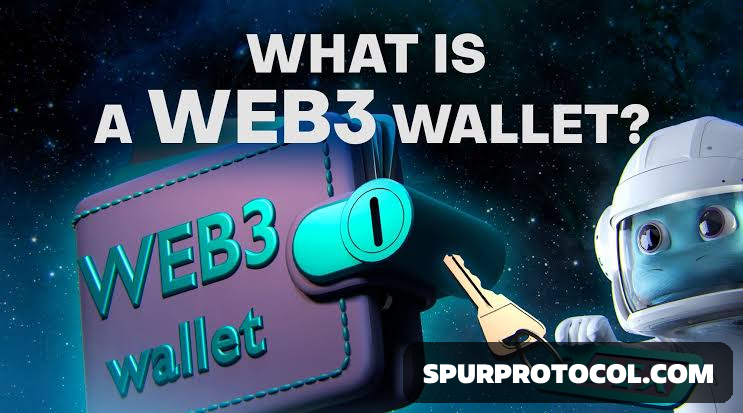What Is a Web3 Wallet?
Web3 wallets are digital wallets designed for the world of decentralized finance. They act as gateways for users to interact with blockchain networks and decentralized applications (DApps), providing a secure way to manage cryptocurrencies, NFTs, and other digital tokens.
How Web3 Wallets Work
-Most Web3 wallets are designed to provide users with full control over their digital assets. This means that users are responsible for managing their seed phrases and private keys.
-Typically, whenever you create a new Web3 wallet, you will generate a unique seed phrase of 12 or 24 words. This is what gives total access to your crypto wallet and its private keys (used to sign and verify transactions).
Key Features of Web3 Wallets
Although some features might differ from one wallet to another, most Web3 wallets come with a set of key features:
1.Multi-asset and multi-chain support
Support a variety of blockchain networks and digital assets, including cryptocurrencies and NFTs.
2.Smart contract and DeFi interoperability
Facilitate seamless interactions with smart contracts, giving users access to DApps, decentralized exchanges, marketplaces, and other blockchain-based applications.
3.Peer-to-peer transactions
Enable users to send and receive digital assets without the need for centralized services or intermediaries.
4.Security
A good Web3 wallet should offer robust security and implement encryption techniques to protect seed phrases and private keys from potential threats.
5.Pseudonymity
Although most blockchain transactions are publicly available, users can create Web3 wallets without sharing sensitive data or personal information.
Custodial vs. Non-Custodial Web3 Wallets
1. Non-custodial wallets
Non-custodial or self-custody wallets provide users with complete control over their assets. Popular examples include MetaMask and Trust Wallet. Non-custodial Web3 wallets are considered the safest option for most traders and investors, as long as their private keys and seed phrases are kept private and secure.
2. Custodial wallets
Custodial wallets involve a third party managing private keys on behalf of users. The wallets you have in your Binance or OKX account are examples of custodial wallets. While offering convenience, users must trust the custodian with their assets, so it’s important to choose reliable and trustworthy exchanges.
Types of Web3 wallets
There are two main types of Web3 wallets:
a) Software wallets
b) Hardware wallets
1.Software wallets
-Software wallets are typically web browser extensions or mobile apps, and remain connected to the internet at all times.
-Many crypto users feel software wallets prioritize convenience and ease-of-use over providing maximum security.
-When using software Web3 wallets, crypto holders can connect to DeFi dApps and make multiple payments quickly and easily. However, their permanent connectivity to the internet means software wallets are especially vulnerable to malware and hackers.
-According to crypto market data website Coingecko, crypto users have created almost a hundred million software wallets, 75% of which were mobile device downloads. The majority of these downloads came from five of the most popular wallet apps:
*Metamask
*Coinbase Wallet
*Trust Wallet
*Blockchain.com Wallet
*Bitcoin.com Wallet
2.Hardware wallets
-Hardware wallets are physical devices used to protect NFTs and digital assets.
-Hardware wallets spend most of the time disconnected from the internet. Because of this, many crypto users feel hardware wallets prioritize offering maximum security over convenience and ease-of-use.
-When a crypto holder wishes to make a transaction from their hardware wallet, they must manually connect their device to a computer and transfer their assets into a software wallet service.
-To provide an additional layer of security, hardware devices are often PIN-protected.
-One common misconception about hardware wallets is that they store digital assets inside the device – they don’t. They simply provide offline storage for your private keys. This makes it nearly impossible for online hackers to access your funds unless they have the hardware device in their hands. If you lose your device, you may still access your crypto assets by entering your seed phrase on a new device.
Four popular hardware wallet manufacturers include:
*Trezor
*Ledger
*Blockstream
*Coinkite
Each offers several different hardware wallets. All devices are compatible with their respective maker’s software. This provides a dashboard for users to interact with, similar to a software wallet.
